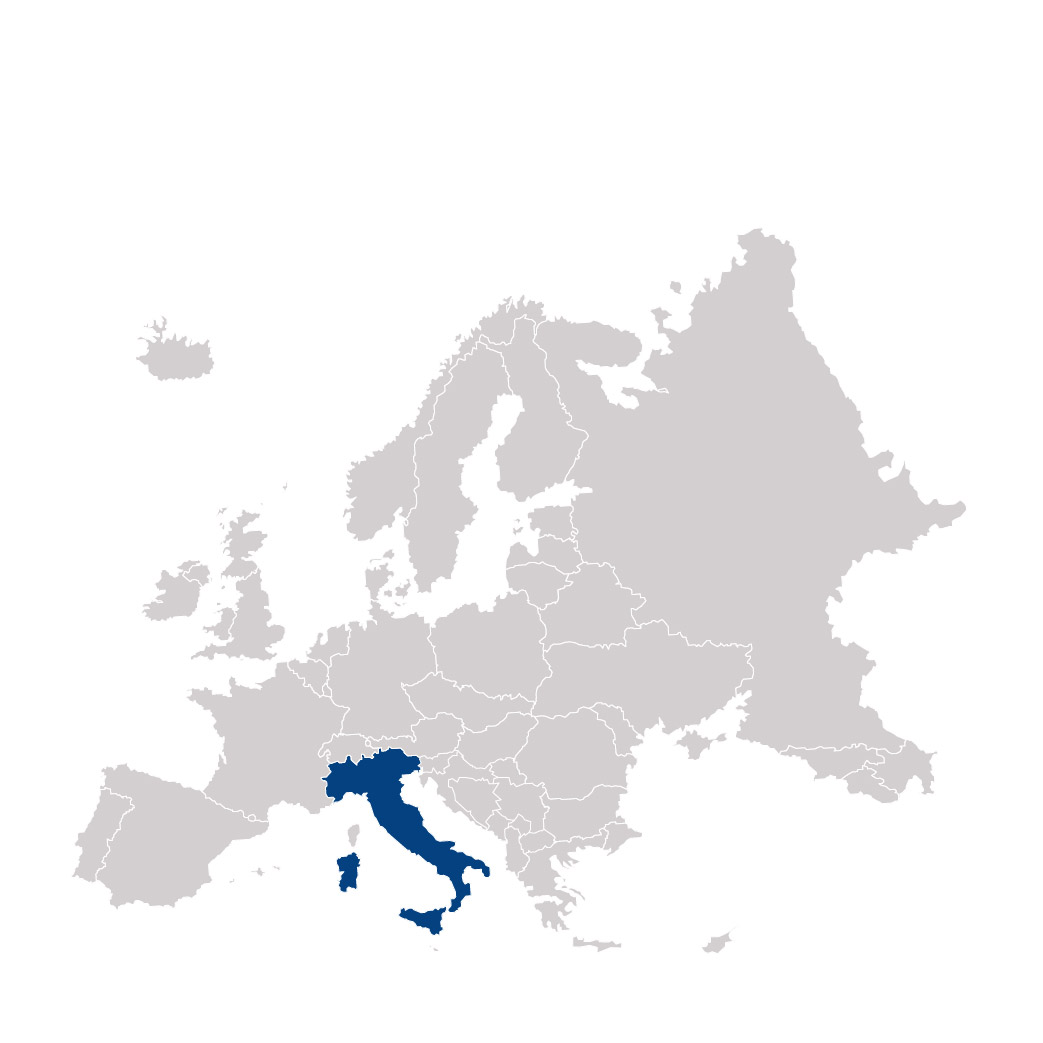The National Research Council – CNR
 The National Research Council (CNR) of Italy, founded in 1923, is the largest Italian research public organization performing multidisciplinary activities. Its mission is to carry out, promote, spread, transfer and improve research activities in the main sectors of knowledge growth and of its applications for the scientific, technological, economic and social Development. The Scientific network of CNR is organized in seven thematic Departments that consist of Research Institutes widely distributed throughout the national territory.
The National Research Council (CNR) of Italy, founded in 1923, is the largest Italian research public organization performing multidisciplinary activities. Its mission is to carry out, promote, spread, transfer and improve research activities in the main sectors of knowledge growth and of its applications for the scientific, technological, economic and social Development. The Scientific network of CNR is organized in seven thematic Departments that consist of Research Institutes widely distributed throughout the national territory.
The multidisciplinary competencies and experiences of CNR participants well match the tasks in the APACHE project focused on new solutions and tools for the effective and affordable preventive conservation of art objects. In particular, CNR will mainly contribute to the synthesis, characterization and optimization of novel chemisorbents for the removal of pollutants and to the development of smart multi-sensors for the early detection of degrading species.
CNR Unit will be represented in the Consortium of the APACHE project by three CNR Institutes: CNR-ISMN (Institute for the Study of Nanostructured Materials), CNR-ISM (Institute of Structure of Matter) and CNRIPCB (Institute for Polymers, Composites and Biomaterials).
Expertise and infrastructure related to the project
The wide panorama of the significant infrastructures of CNR institutes involved in the APACHE project
includes large facilities, networked laboratories and skills to apply advanced technologies to the mission of the CNR, as “Chemical Manufacturing & Advanced Materials Technology”. Research and development activities are focused on technology development, prototyping and demonstration and are carried out in well-equipped laboratories for sophisticated chemical synthesis and processing and for their characterization by advanced laboratory techniques and portable equipment for in situ analysis. Advanced surface and bulk analytical techniques will be used, ranging from optical, spectroscopic, morphological, electrical, calorimetrical, to electrochemistry and microscopy tools.
CNR-ISMN
The Institute for the Study of Nanostructured Materials (ISMN) is a multi-disciplinary research Institute devoted to frontier research in nanoscience and nanotechnology. A significant part of the research and scientific activities are carried out within EC funded, also as co-ordinator, and national projects to address a variety of issues concerning the knowledge and the conservation of cultural heritage. CNR-ISMN competencies include the assessment of the conservation state, the identification of degradation agents and mechanisms acting at nano-scale, the design, synthesis and validation of tailored innovative materials for the long-lasting and reliable conservation of artefacts and the development of novel solutions for the monitoring of degrading species. Within the APACHE project, the CNR-ISMN group, headed by Gabriella Di Carlo, is involved in the development of new green materials for the removal of atmospheric degrading pollutants and will contribute to the development of nanostructured sensors for the early detection of degrading species. The CNR-ISMN group has been and is involved in European projects (as H2020 NANORESTART, H2020 InnovaConcrete), National and Regional research projects aimed at the development of new materials and technologies for the conservation of cultural heritage.
CNR-IPCB
The research activities of the Institute for Polymers Composites and Biomaterials (IPCB) of the Italian National Research Council converge in three main subjects: Advanced Materials, Sustainability and Health/Nanomedicine. For what concerns the topics of APACHE project, the main IPCB skills that will be exploited will be those related to the research line Advanced Materials, with focus on the synthesis and the study of structure-property relationships of hybrids and polymer nanocomposite systems. In particular two working groups are involved in the APACHE research activities: the group headed by Marino Lavorgna in Portici for the activity related to the development of functional composites and the group headed by Gennaro Gentile in Pozzuoli for the activity related to the development of high-crosslinked resins and. The IPCB has the all the devices for the designing, preparation and characterization of polymer-based materials ranging from traditional technologies up to more advanced facilities for a fully characterization of materials. The IPCB was recently involved in other European project focused on Cultural heritage involving INNOVACONCRETE and NANORESTART and also several national and regional projects.
CNR-ISM – DiaTHEMA Lab
Since the 2010s, the DiaTHEMA Lab (Diamond, Thermal & Harsh Environment Materials & Applications) of CNR-ISM has been developing know-how in nucleation, deposition and study of properties of nano-structured thin films. The group, constituted by interdisciplinary physical, engineering and chemical expertise, developed high performance diamond-based devices with an original design and by performing an appropriate tailoring of the building-block material properties: UV and X-ray detectors, dosimeters for radiotherapy, electron multipliers, nuclear-to-electrical energy converters, room-temperature spectrometers that were successfully employed for monitoring pulsed fast neutron sources at ISIS in UK and are going to be installed at Euratom JET.
The materials, initially developed for harsh nuclear ambiences, were successively applied to concentrating solar systems. The DiaTHEMA Lab has developed innovative conversion modules for solar concentrating systems based on thermionic and thermoelectric effects, of which it managed the scientific coordination. DiaTHEMA Lab coordinated the FET project ProME3THE2US2 for the development of photon enhanced thermionic emission devices for concentrated solar converters in order to produce high-temperature high–efficiency semiconductor direct converters. DiaTHEMA Lab was involved also in the EU FP7 IRP project STAGE-STE for the development of solar thermal receivers. Recently, by exploiting its know-how in the development of nanomaterials, the group is developing high operating temperature nanostructured thermoelectric and thermionic films based on tellurides, carbides, borides, and fluorides for applications in solar concentration as well as novel materials for gas sensing with high sensitivity and selectivity.
LOCATION

